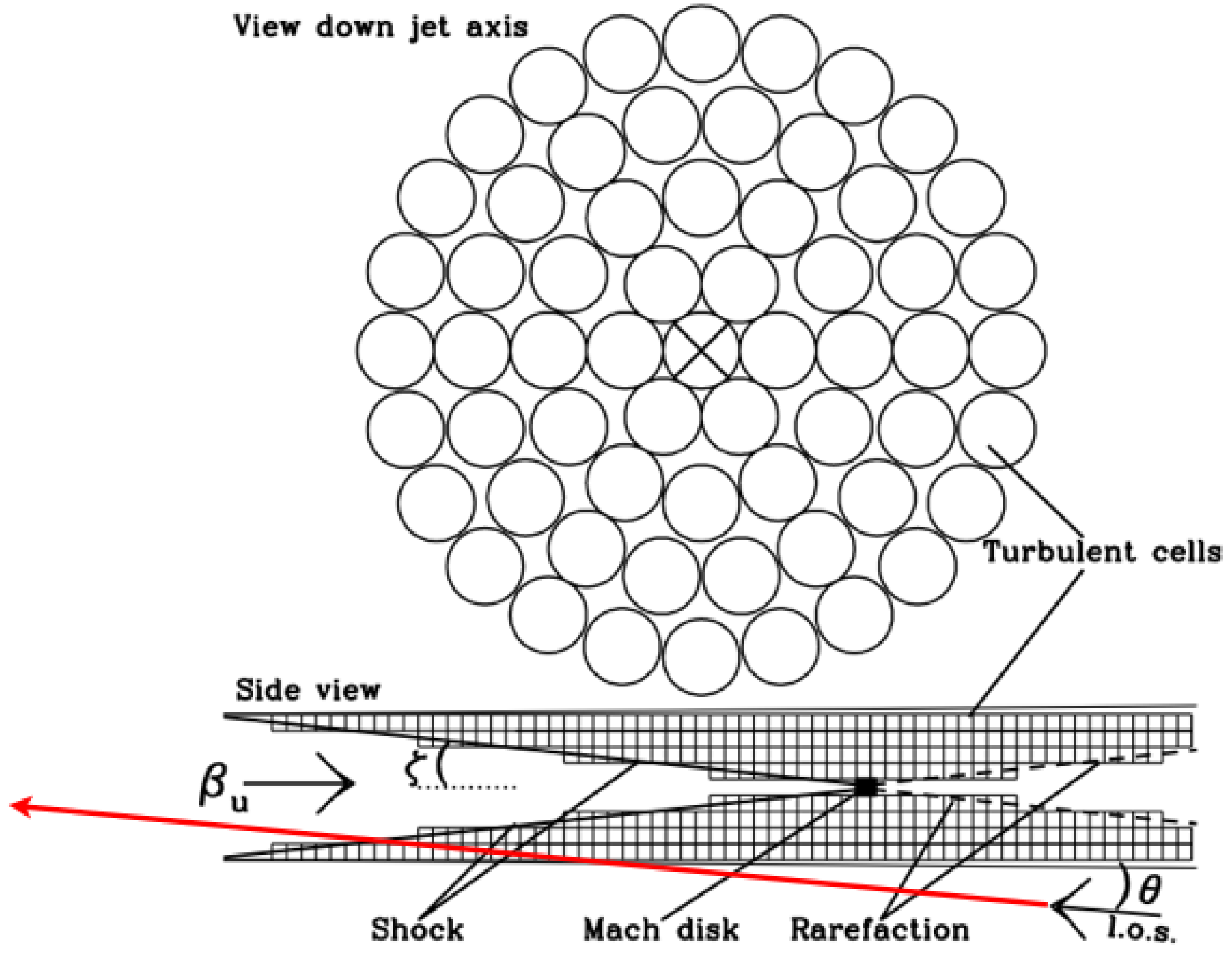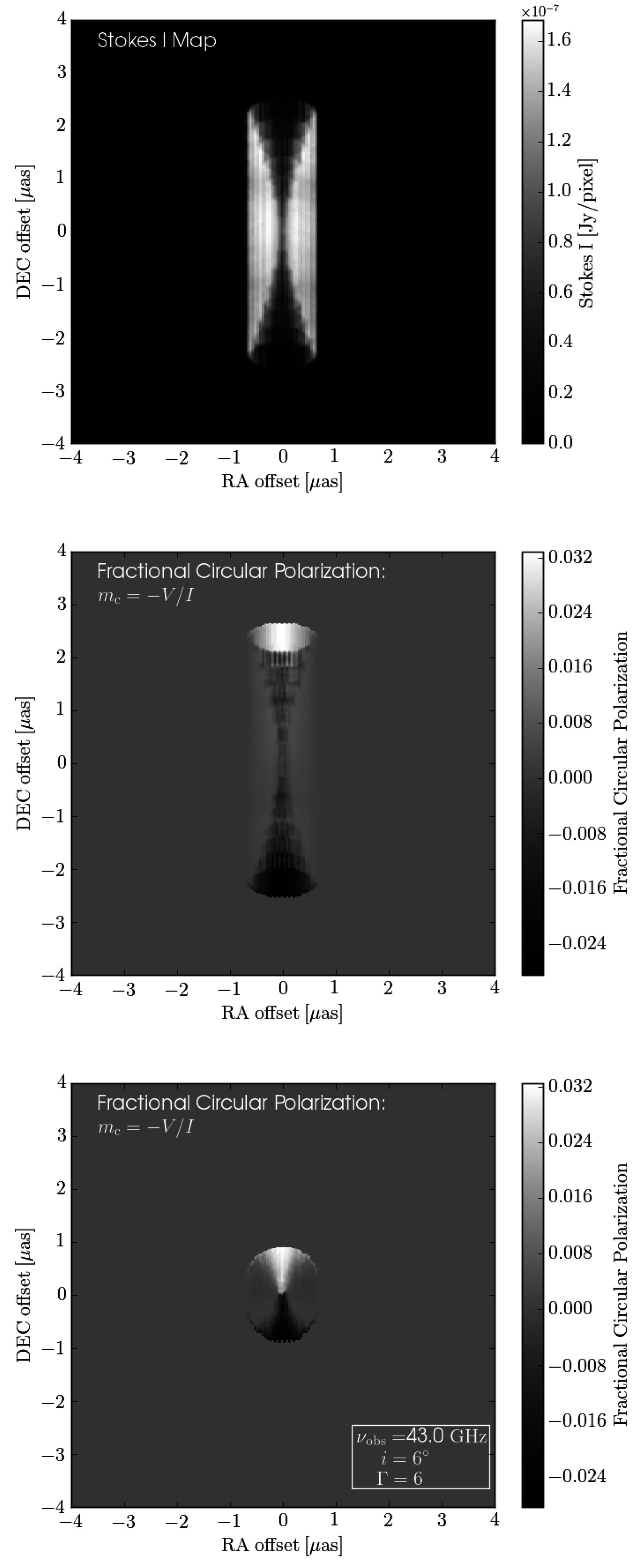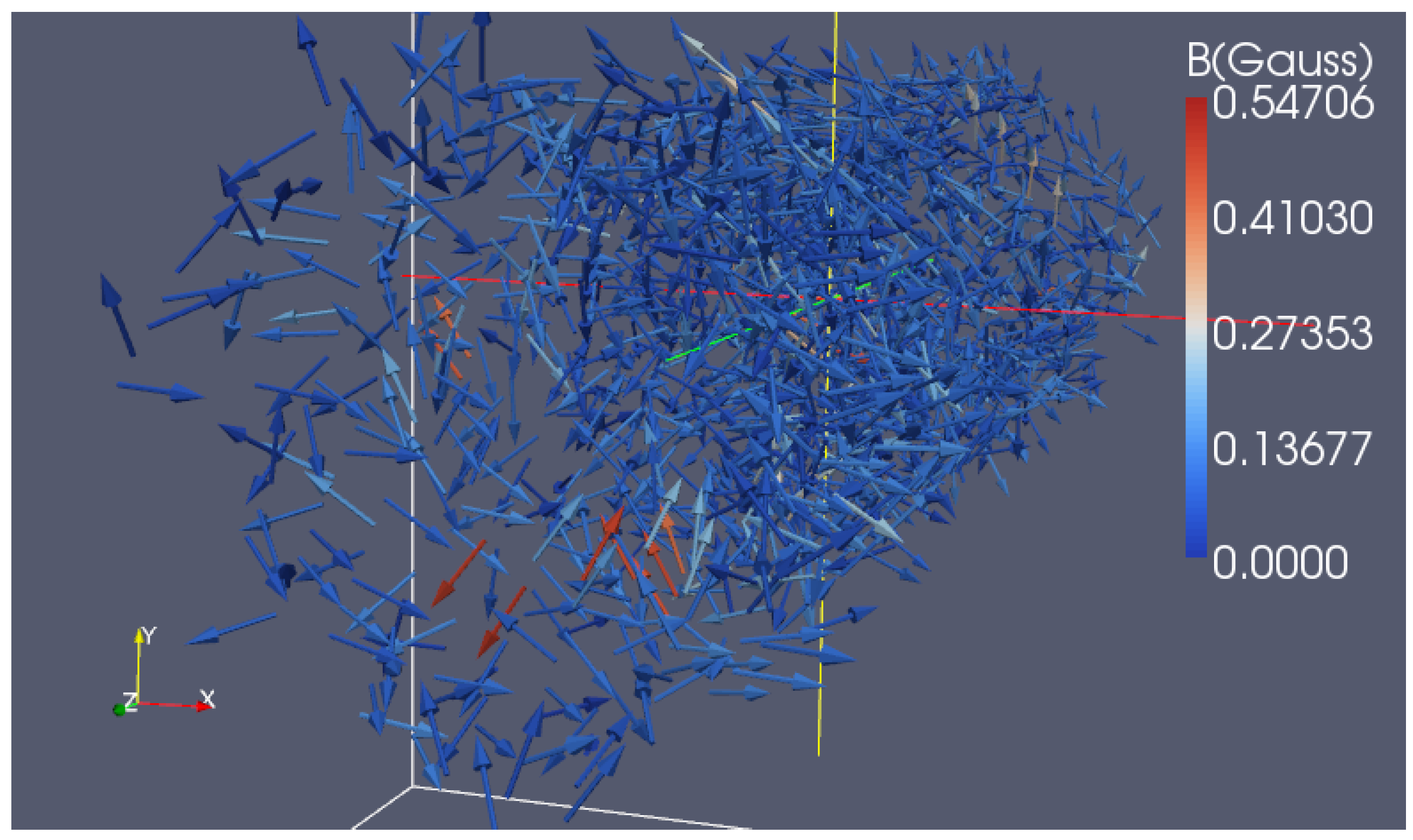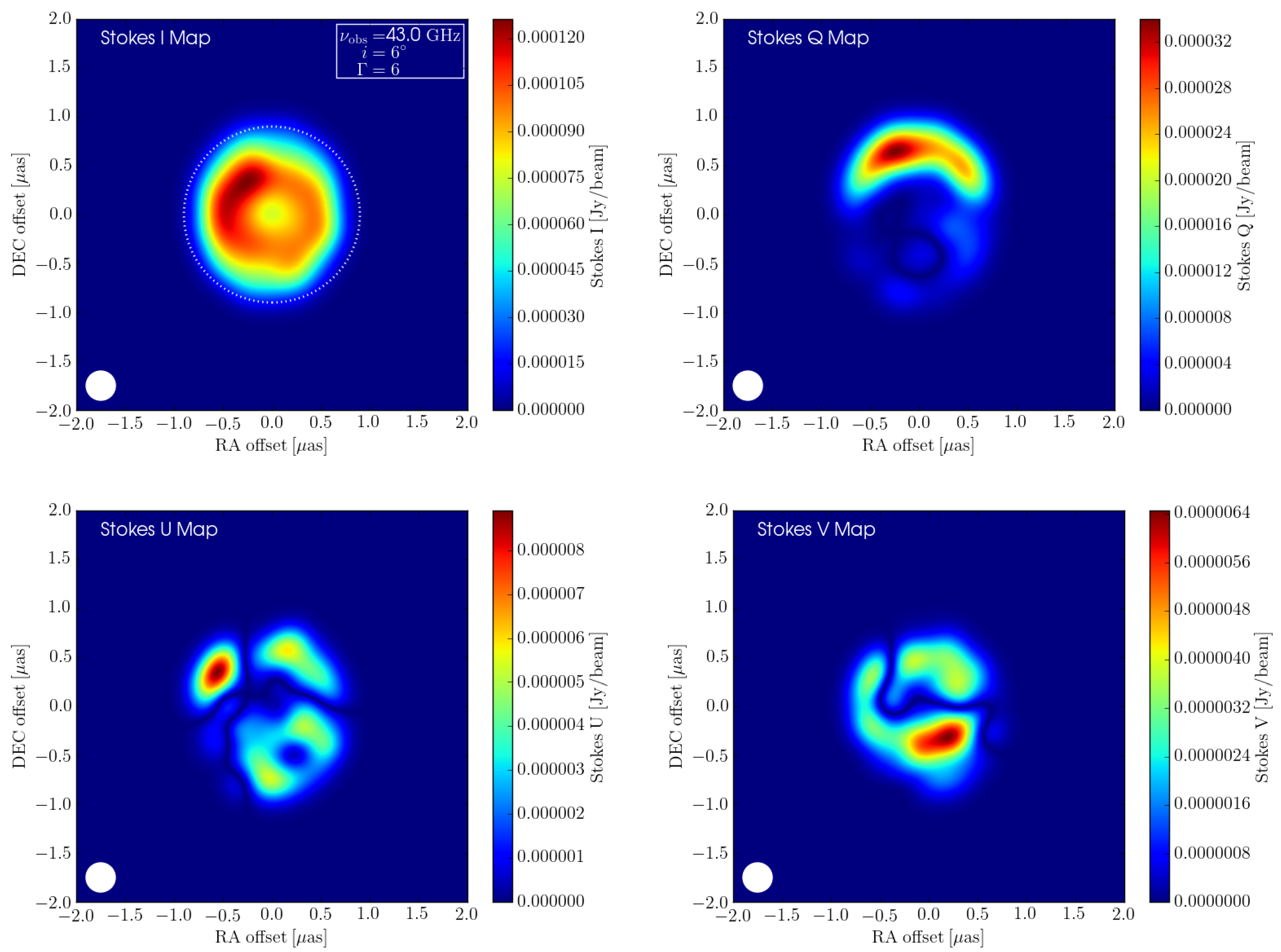Through the Looking Glass: Faraday Conversion in Turbulent Blazar Jets
Abstract
:1. Introduction
2. Polarized Radiative Transfer
3. Results
3.1. Ray-Tracing through an Ordered Magnetic Field
3.2. Ray-Tracing through a Disordered Magnetic Field
4. Future Research
Conflicts of Interest
References
- Homan, D.C.; Lister, M.L.; Aller, H.D.; Aller, M.F.; Wardle, J.F.C. Full polarization spectra of 3C 279. Astrophys. J. 2009, 696, 328. [Google Scholar] [CrossRef]
- Homan, D.C.; Attridge, J.M.; Wardle, J.F.C. Parsec-scale circular polarization observations of 40 blazars. Astrophys. J. 2001, 556, 113. [Google Scholar] [CrossRef]
- Marscher, A.P. Turbulent, extreme multi-zone model for simulating flux and polarization variability in blazars. Astrophys. J. 2014, 780, 87. [Google Scholar] [CrossRef]
- Jones, T.W.; O’Dell, S.L. Transfer of polarized radiation in self-absorbed synchrotron sources. I. Results for a homogeneous source. Astrophys. J. 1977, 214, 522–539. [Google Scholar] [CrossRef]
- Jones, T.W. Polarization as a probe of magnetic field and plasma properties of compact radio sources-Simulation of relativistic jets. Astrophys. J. 1988, 332, 678–695. [Google Scholar] [CrossRef]
- Homan, D.C.; Wardle, J.F.C. High levels of circularly polarized emission from the radio jet in NGC 1275 (3C 84). Astrophys. J. 2004, 602, L13. [Google Scholar] [CrossRef]
- Lyutikov, M.; Pariev, V.I.; Gabuzda, D.C. Polarization and structure of relativistic parsec-scale AGN jets. Mon. Not. R. Astron. Soc. 2005, 360, 869–891. [Google Scholar] [CrossRef]







© 2016 by the author; licensee MDPI, Basel, Switzerland. This article is an open access article distributed under the terms and conditions of the Creative Commons Attribution (CC-BY) license (http://creativecommons.org/licenses/by/4.0/).
Share and Cite
MacDonald, N.R. Through the Looking Glass: Faraday Conversion in Turbulent Blazar Jets. Galaxies 2016, 4, 50. https://doi.org/10.3390/galaxies4040050
MacDonald NR. Through the Looking Glass: Faraday Conversion in Turbulent Blazar Jets. Galaxies. 2016; 4(4):50. https://doi.org/10.3390/galaxies4040050
Chicago/Turabian StyleMacDonald, Nicholas Roy. 2016. "Through the Looking Glass: Faraday Conversion in Turbulent Blazar Jets" Galaxies 4, no. 4: 50. https://doi.org/10.3390/galaxies4040050




